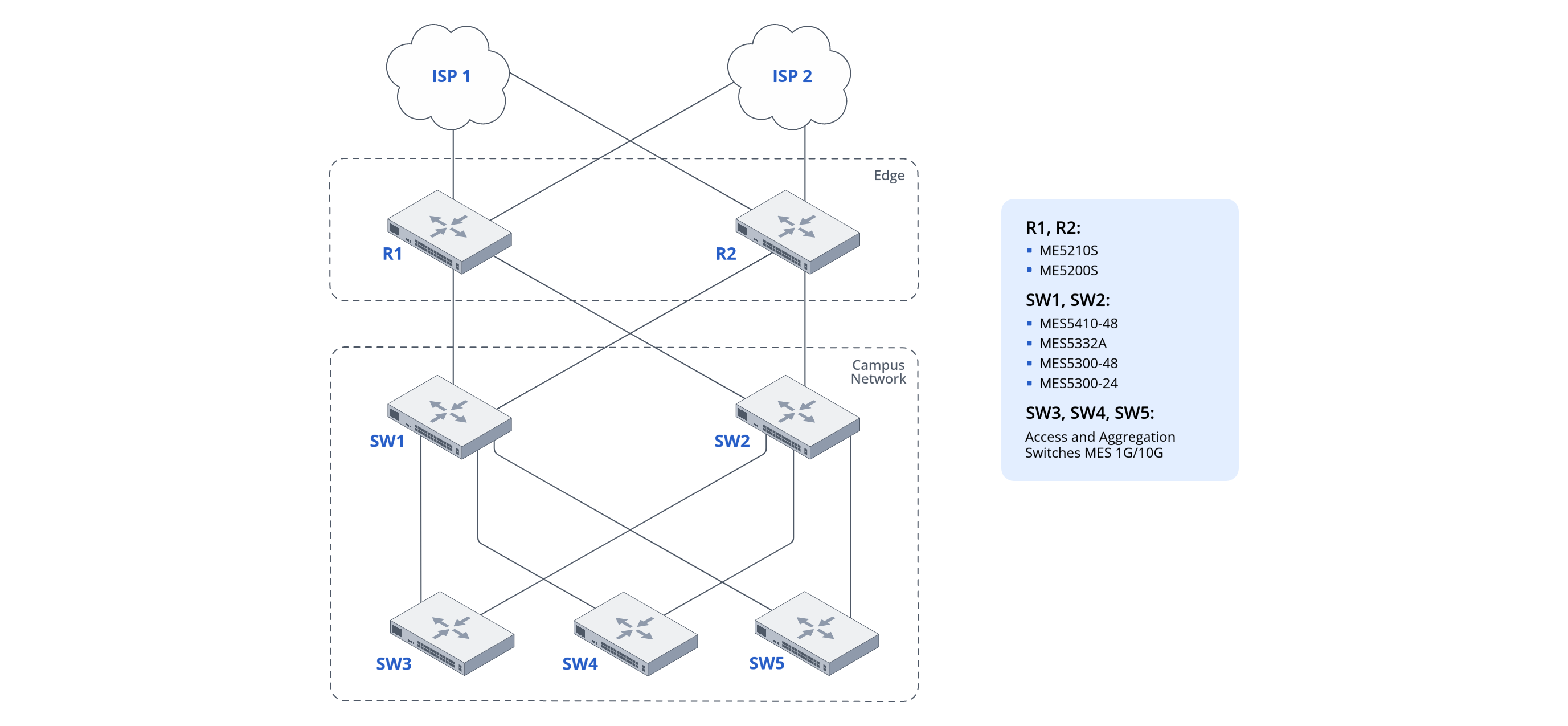Building a corporate network based on ME routers


Description
Large organizations with dozens of branches or production sites exchange terabytes of data every day. This array passes through the enterprise backbone network, which provides a path for information exchange between departments and also provides connection to the Internet. The reliability and predictability of this environment depends on the equipment on which it is built.
For organizing a corporate network, we suggest considering a solution using ME series routers. The devices support the construction of IP/MPLS networks, Multicast features, QoS, GR, and many other functions. Below are the details of infrastructure which uses ME routers.
Solution architecture
- ME routers
The core of the solution is the ME series routers. The line includes modular (chassis) and fixed models. The fixed models are typically used to build corporate networks: these are the ME5210S and ME5200S routers. They are more compact, more economical, and provide sufficient performance for building a backbone, for example, for a large holding company. If more powerful routers are required, the ME5000M and ME6008 (under development) models can also be considered.
The key feature of routers is support for Multiprotocol Label Switching (MPLS) technology. This technology allows building high-performance, fault-tolerance, and scalable corporate networks and create secure, isolated virtual private networks (L2VPN/L3VPN).
Eltex equipment implements a full set of modern dynamic routing protocols: OSPF, IS-IS, BGP, as well as support for static routing. Traffic Engineering capabilities are used to help flexibly manage data flows and balance the load in accordance with SLA requirements.
Graceful Restart technology is used to ensure fault tolerance. It preserves session states and minimizes losses during switching. ME routers support advanced QoS mechanisms that allow flexible management of traffic classes and ensure stable operation of critical services.
To increase fault tolerance, ME routers support MLAG, which allows reserving connections and maintaining service availability in the failures.
ME routers support a number of features that are in demand in specialized corporate scenarios. For example, in industrial networks with a distributed structure, accurate time synchronization is critical – PTP (IEEE 1588v2) and SyncE standards are provided for this purpose. For companies developing their own data centers, EVPN/MPLS is supported, which simplifies the integration of data centers into the backbone and ensures interaction with the rest of the corporate infrastructure.
NETCONF implementation provides convenient monitoring and automation of equipment management. This makes ME routers easy to integrate into modern management systems and makes the operation of complex networks more efficient.
- MES switches
Eltex MES series switches are used to organize the internal infrastructure of branches. This is the line of devices that includes solutions for all levels, from access and aggregation to the core. They integrate with ME routers to form a unified network space.
The aggregation-level solution uses MES53(54)xx-xx series equipment. The performance of this line of equipment reaches 3.6 Tbps, which allows supporting resource-intensive services and process significant amounts of traffic. For the access level, it is recommended to use MES2300-xx series solutions with a bandwidth of up to 176 Gbps. Support for stacking up to 8 devices allows building a fault-tolerant architecture with centralized management capabilities.
- ECCM configuration monitoring and management system
The Eltex Cloud Configuration Manager (ECCM) system is used to manage and operate the infrastructure. The system provides administrators centralized control over the network: topology visualization, automation of configuration and software update processes, and equipment inventory management. This simplifies corporate network management and reduces operating costs for maintenance.
General solution scheme
Equipment








